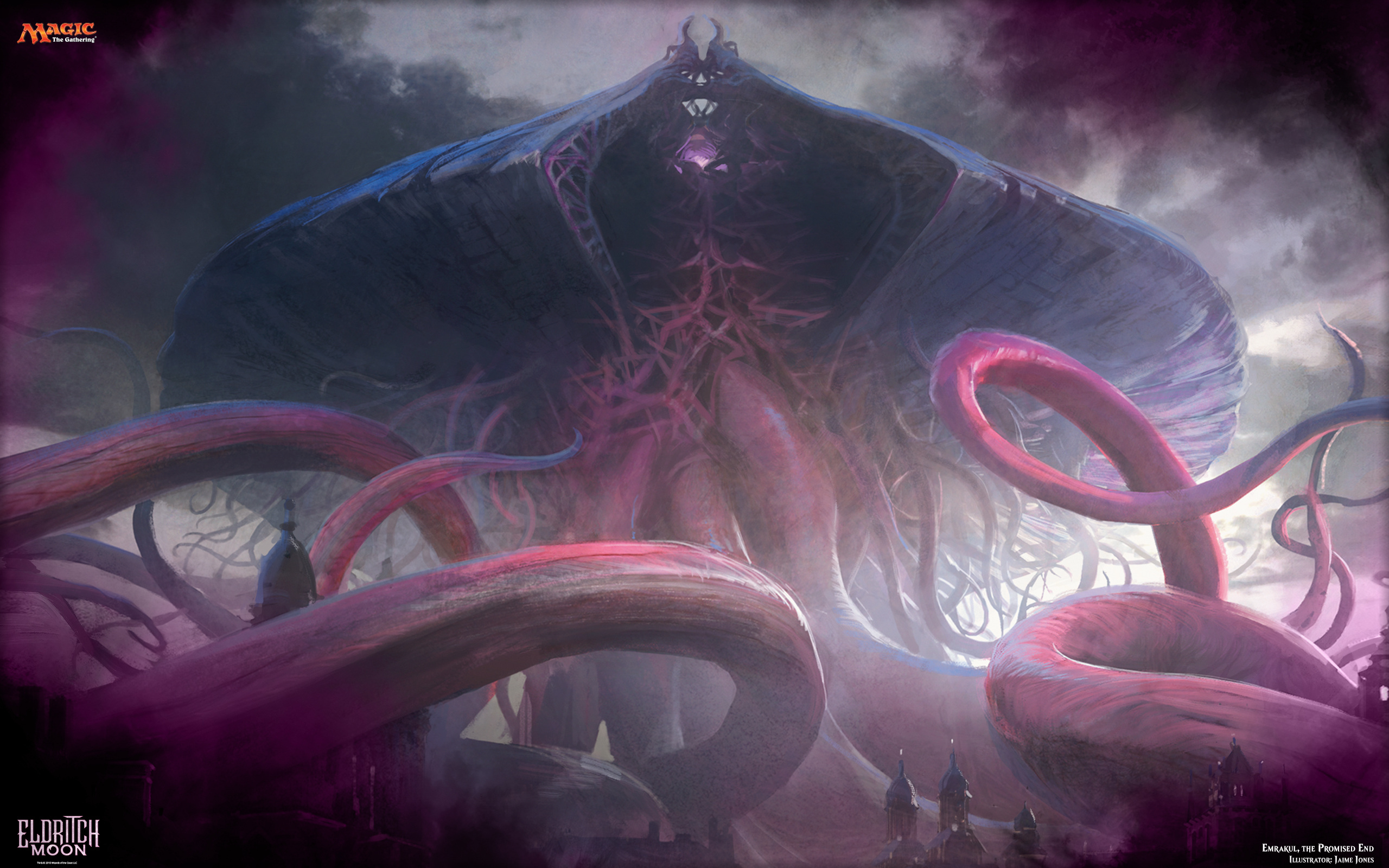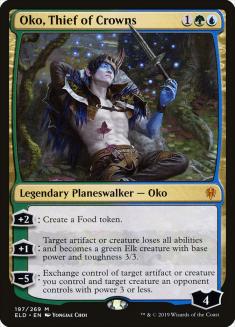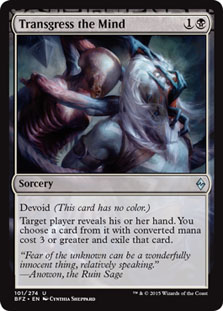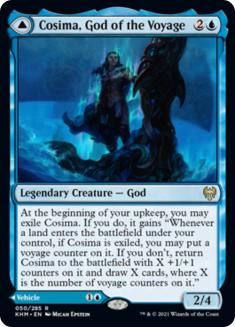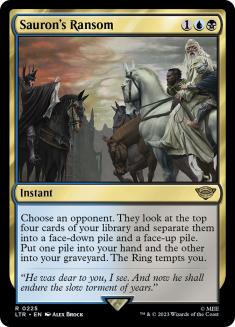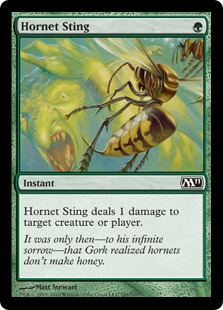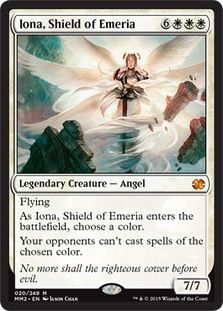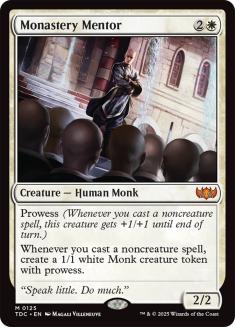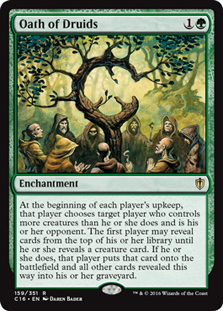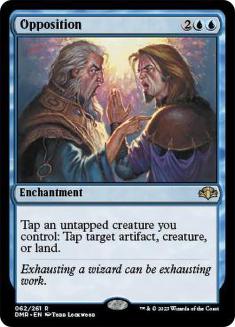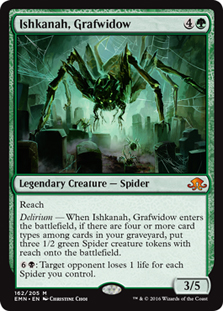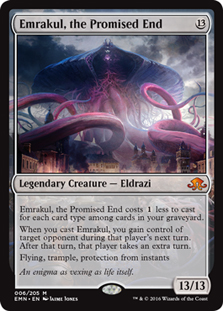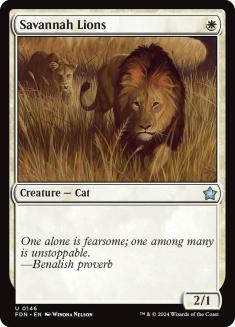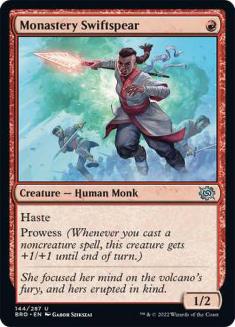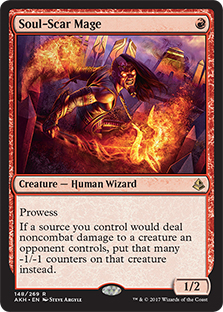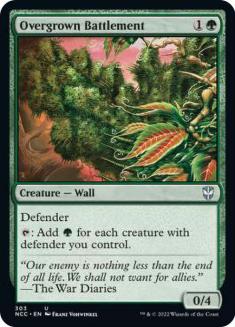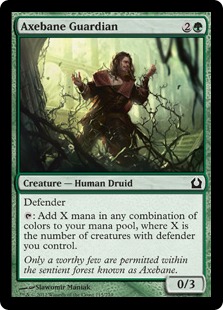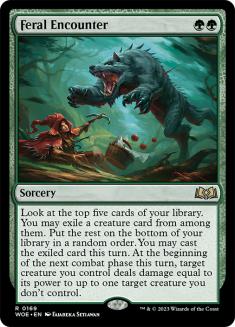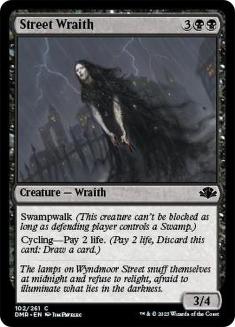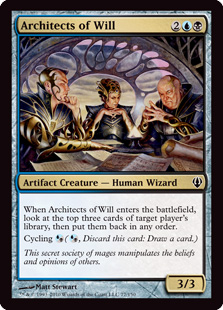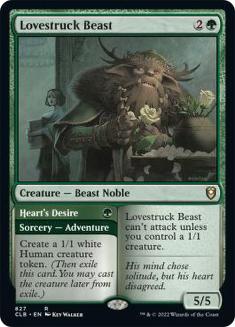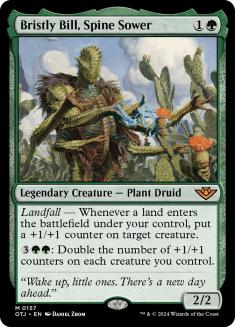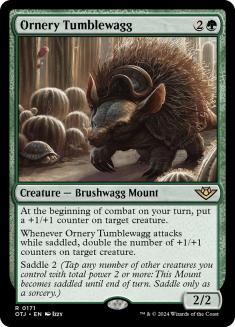Howdy, gamers! After a very packed release schedule, there is finally a little bit of a lull before Duskmourn: House of Horror releases late next month. With the Magic Online (MTGO) Vintage Cube list locked in for now as well, this is a good time to explore some topics that I find personally interesting. Today, I’d like to talk about how a Cube evolves.
I write a lot about exciting new cards and which Cubes they would fit well in, but I’ve written comparatively little on how Cubes change over time. After making some significant updates to a few of my projects recently, I thought it fitting to explore what I see as the four major considerations as I update my Cubes. As I make changes, I do so on the basis of cards, colors, archetypes, and decks. Let’s dive into definitions of these terms and the nuances of these considerations.
Cards
Discussion of slots in Cube most commonly happens on a card-by-card basis, and in my experience, it is the most common form of feedback that I get as a Cube designer. A Magic card is never played in a vacuum, but it is often considered in one. When I refer to “cards” as a criterion, I simply mean considering a card fully on its own merits.
Power
Very often, “card” considerations are based on individual card power levels. I’ve written a good amount on power level outliers, and this is the basis for why we don’t see Oko, Thief of Crowns in a lot of non-powered Cubes. Post-draft discussions in my experience often revolve around whether an individual card seems too powerful or too weak, and I often make small updates to my Cubes consisting of a handful of swaps on this basis.
Aesthetics
Aesthetic considerations are the other side of individual card discussions. I can’t tell you how many cards have received scrutiny in my Spooky Cube or exited outright on the basis of whether or not the card was, well, spooky. A more approachable example might be my inclusion of Transgress the Mind over Thoughtseize in the Eldrazi Twobert. I think Thoughtseize would be perfectly fine in the environment, but Transgress the Mind speaks to the Eldrazi aesthetic of the environment in a way that Thoughtseize simply doesn’t. I explored synergies with exiling cards, but this card choice is largely about vibes.
Complexity
Complexity also comes up pretty regularly these days on an individual card basis. When I think of card complexity, I often remember Cosima, God of the Voyage’s inclusion in the MTGO Vintage Cube once upon a time, and my absolute refusal to remember all of the card’s text. It just wasn’t worth it! This is also a big part of the discussion regarding whether to include a small number of cards that introduce a lot of text not printed on the card itself with mechanics like the initiative and The Ring. I want to like Sauron’s Ransom, but the last four words on the card totally kill the vibes for me!
A Cube is very literally a selection of cards, but relevant considerations hardly start and stop here!
Colors
I pay a lot of attention to the colors of cards in my Cube, with my experience working on the original Twobert very much highlighting the importance thereof. A lot of players like to talk about the color pie, and that can have more or less impact on how you curate your Cube based on your preferences. For me, when I think about colors for the purpose of Cube curation, my focus is on whether a given card plays well with other cards of that color in the Cube, which is an essential aspect of Twobert design for me that can inform the curation of larger Cubes as well!
I consider what I want my colors to do when first constructing a Cube, and once I land on themes for my colors, I try to stay true to them when making minor updates. An example of a color in one of my Cubes with a very clear focus is red in my Tempo Twobert, which has close to a singular focus on dealing damage efficiently.
Truth to Color
The question I tend to ask myself when adding a card to a Cube is whether decks of that card’s colors would play the card. A funky new addition to the Tempo Twobert is Hornet Sting, which is weaker than quite a few red cards, but green had a lot of stuff that wasn’t working, so I focused strictly on whether a green player would play the card. Answering Mother of Runes and a handful of other one-toughness creatures is important in the environment, and it turns out that the answer is yes, they would!
Purpose
Similarly, when I’m looking for cuts in a color, I’ll look for cards not fitting that color’s goals. Two cards that come to mind in this regard are Iona, Shield of Emeria and Monastery Mentor. Iona is technically a white card, and we would see it in the white column of the MTGO Vintage Cube, but nobody has ever played their ninth Plains in a game of Vintage Cube and cast an Iona. It’s a Reanimator target and that’s about it. If anything, you could give it a colorless slot, but counting it as a white card in your Cube messes up the color balance a little.
Monastery Mentor is much more of a white card, but realistically it only ever shows up in blue decks and/or decks with some kind of Sensei’s Divining Top combo. Seeing as a big chunk of the white cards in the Cube are for the express purpose of supporting aggressive decks, it does stick out, and it’s not surprising that we see it pop in and out of the MTGO list. I’ve decided it doesn’t fit my personal Vintage Cube at all.
Many Cubes intentionally play with color balance and do otherwise funky things with their colors, but even still, as your Cube evolves, keep color in mind to best understand your environment and its needs.
Archetypes
Archetypes are front and center of a lot of conversations about the draftable strategies in a given retail Limited or Cube environment. An “archetype” is essentially the focus of a deck. This is often considered in terms of the macro-archetypes aggro, control, and combo, but also refers to a much wider range of things that decks can be built around. Mechanics like madness and storm are common archetype names, and their purpose is to communicate what the deck fundamentally cares about. Some archetypes, like Oath of Druids and Opposition, highlight a singular card that a deck leans on for its gameplan.
The many definitions of “archetypes” extend to their practical applications for Cube curation. Some of your archetype focus will be on making sure that controlling and aggressive decks can find success in your Cube, and some will be on making sure you have the proper volume of cards to facilitate more specific strategies.
Attention to Archetype
A good example of an archetype that requires a lot of specific attention that I’m particularly fond of is delirium. Supporting delirium involves peppering significant diversity of card types into your Cube and will turn your attention specifically on how to get cards into a player’s graveyard. This also exists on a continuum of whether you want a particular archetype to be aggressive, controlling, or both, as this will impact your specific card selection. An aggressive delirium deck will need to fill its graveyard with multiple card types quickly to be successful, whereas a controlling delirium deck can lean on using different card types to interact with the opponent over time to set up for a big payoff like Ishkanah, Grafwidow or Emrakul, the Promised End.
There will of course be overlap in cards that can support aggressive and controlling decks, and the most important thing to remember is that, unless you’re specifically trying to alter the balance between the two, as you update your Cube, you want to cut aggressive cards for aggressive cards and controlling cards for controlling ones. To use an extreme example, you wouldn’t cut Wrath of God from your Cube to add Savannah Lions unless you wanted to both hurt the control decks and bolster the aggro decks.
Package Deals
We’ve seen archetype-focused curation in recent updates to the MTGO Vintage Cube in the format of their “packages” approach. This approach is a creative way to cycle cards that don’t quite have a regular place in the Cube in and out. Similarly to my point about swapping aggressive cards for controlling ones, you do need to make sure that your micro-archetype focus doesn’t lose sight of the macro-archetypes of your Cube.
For example, Monastery Swiftspear is currently being cycled in and out of the Cube with a “prowess package”. This treatment makes a lot of sense for Soul-Scar Mage, which is a relatively weak card if you can’t consistently main-phase some noncreature spells. Monastery Swiftspear, on the other hand, is among the most powerful aggressive red cards of all time with haste, putting it way over Soul-Scar Mage, and it being cycled out with this package is detrimental to the macro-archetype of red aggressive decks.
Archetype and Color
Archetype curation tends to overlap significantly with color curation, as archetypal support often lies within one or two colors. Monastery Swiftspear and Soul-Scar Mage happen to be two foundational cards in the red column of my Tempo Twobert, which grounds the color not just as an aggressive color, but as a color that pushes a prowess archetype. I couldn’t update the Cube regarding swapping red cards or a prowess archetype without impacting both the color broadly and the archetype specifically.
Another example of a color tied to an archetype, and in fact one that I overhauled completely, was an attempt at a “defenders matter” theme in my Eldrazi Twobert. I originally put a bunch of defenders in the Cube to evoke Rise of the Eldrazi Limited and to round out slots for non-Eldrazi cards. Two of the best defenders are Overgrown Battlement and Axebane Guardian, and while those cards were okay, the defenders theme was weak otherwise. I had many green defenders in to subsidize the strong ones, and I just completely gutted the color for more green Eldrazi and more colorless cards in place of other defenders to move the Cube away from an archetype that wasn’t working and a color that I shouldn’t have dedicated to trying to force it.
When I think about archetypes, I tend to think of them as being what the Cube designer plans for the focus of games to be on paper: seeding various aggressive, controlling, and combo strategies, and what you want them all to care about. And invariably, we then experience the reality check of our final metric.
Decks
Like cards, the metric of decks is straightforward. I am referring simply to the actual piles of cards that people draft and play with in your Cube. Sometimes you’ll see decks line up exactly with your vision for them, but more often, you’ll see things you never thought of. This could mean fun moments of discovery regarding the pieces of the puzzle you presented overlapping in ways you had never considered, and sometimes you find yourself wondering how the hell somebody drafted the non-functional pile that they did and where you failed them as a Cube designer.
Decks in Review
Going over the decks drafted from your Cube is invaluable information as you move forward with your design, and it helps to inform how well you’ve assessed your Cube’s cards, colors, and archetypes. Learning what cards pull people where and whether you have an appropriate volume of support for a particular archetype is the information you will use to take a good Cube and mold it into a great Cube.
I tend to have a short list of cards that I’m watching in my Cubes, as well as colors and archetypes that I’m noodling updating, but the biggest opportunities to learn about my environments come from asking players why they drafted the decks that they did, as well as how the decks performed relative to expectations. You won’t always agree with their perspectives or understand their rationale, but you will always broaden your understanding by connecting with another player about their experience.
Cutting a Problem
A recent example that comes to mind happened after a draft of the Tempo Twobert on the WeWillBeCubing stream (Thursday nights at 6:30 Central!). I had added Feral Encounter to the Cube. I was paying mind to it; it’s kind of a mess to read, so it wasn’t the most satisfying card on the complexity front.
My friend Jacob didn’t seem to take any issue with the complexity, but he took the GG mana cost to mean that there was support for a mono-green archetype in the Cube! There was not and I have no intention of moving the Cube in that direction, so while Feral Encounter didn’t get ejected from the Cube for the reasons that I expected, it was valuable to learn of additional reasons to have reservations about the card based on the experience other players had drafting decks in the Cube.
Increasing Support
Sometimes these conversations can lead to expanding support for the deck that a player tried to draft or making a note for something to try in the future, though most often I use these moments to reassess the aesthetics of my design and what they might lead players who don’t know the environment remotely as well as I do to believe.
Reviewing decks is also very useful in adjusting the volume of support you give to specific archetypes. I support Death’s Shadow in the Tempo Twobert, and while it is a strong card with a lot that’s going on in the Cube, it does require some specific archetypal support. For a long time, I had Street Wraith in the Cube to really push players to draft Shadow, but over time, it became clear that none of the good decks playing Death’s Shadow ever went that hard, and Street Wraith has exited the main Cube for this reason.
When Support Goes Wonky
An interesting card to consider in a similar vein is Architects of Will. I once featured it in Spooky Cube for its ability to efficiently put two card types in your graveyard to support delirium. Even adding two types, it’s just not as useful as cards like Mishra’s Bauble that give you a type for zero mana or cards that do more than put a type or two in your graveyard by spending mana. Worse yet, sometimes people just aim to cast Architects of Will (or Cogwork Librarian) for four! This might be fine in a very low power environment, but I know I’m on the wrong path when I put in wonky cards to try to facilitate something powerful and those cards just end up being used in ways that are much weaker than what I intended.
Refinement
Going back to green in the Tempo Twobert, I’ve struggled to find significant draws to green for some time with the Cube. Mana creatures like Noble Hierarch fell flat given that all the spells were cheap anyway, and adding four-mana cards like Thrun, the Last Troll did the opposite of helping in this regard. I had slotted Experiment One and Pelt Collector in the Cube as cheap plays that made sense to me for green players to cast early, and I tended to assess new green cards around pushing those creatures to grow large.
What I discovered after adding some very effective two- and three-mana creatures recently is that successful green decks just played the great two- and three-mana creatures and eschewed the Experiment One and Pelt Collector that I was trying to support entirely! As such, I cut the underperforming one-drops and adjusted green to match the reality of actual, successful decks.
The “Best Version” Criterion
One question that I try to consider in this context is whether the best version of a deck would play a particular card. Once it became clear that the green decks in the Tempo Twobert were winning in spite of the one-drops that first influenced my curation, I changed my assessment to see those cards for the filler that they were. They were now the green cards that the green decks wouldn’t play.
The water does get muddier once you’re exploring more niche archetypes across more colors, though. For example, the very best Vintage Cube Storm decks would generally only ever sideboard and draft Empty the Warrens as a low priority, but that assessment is one based on armchair archetype design. Once you draft and observe a lot of Storm decks in practice, you start to understand that Empty the Warrens is an important payoff to have around to ensure that actual decks that players draft are more playable on average.
Assessing Overlap
Seeing the decks that players draft also helps to determine if the archetypes you’re supporting overlap enough in practice. If your archetypes are overly rigid, you’ll see some combination of exactly what you prescribed in design being drafted and decks that just don’t work at all because too many of the cards in your environment don’t work with too many of the other colors.
The most basic example of this would be a player trying to draft an aggressive deck and ending up with too many cards that are bad at dealing damage, but there are plenty more ways for this to manifest. Examples include excessively parasitic cards like Empty the Warrens not finding the right home, and weird juxtapositions of cards that have intended synergies ending up in decks with cards that just don’t amount to much as compared to other individual cards or the decks where the players did draft the intended synergies.
Poison Perspective
A really good example of this comes from Scars of Mirrodin block Limited as well as almost every Cube that I’ve seen try to incorporate some amount of poison. When a deck has some amount of infect creatures and some amount of non-infect creatures, you find yourself trying not to deal 20 damage or 10 poison, but rather closer to the 30-sum of the two objectives. I’m always on the lookout for ways that my cards, colors, and archetypes might be overly parasitic and thus cause some players to draft decks that unfairly need to “deal 30”.
Four Categories, One Goal
Many discussions around Cube curation focus on individual card selection and archetype support, but I find that it’s useful to bolster these concepts in the context of color curation and to refine your assessments based on actual decks drafted. Card assessments, color considerations, supported archetypes, and decks drafted all offer useful information for curating our Cubes. Approaching and understanding all four categories will help you to push your Cube in a more harmonious and, by extension, more fun and replayable direction.
***
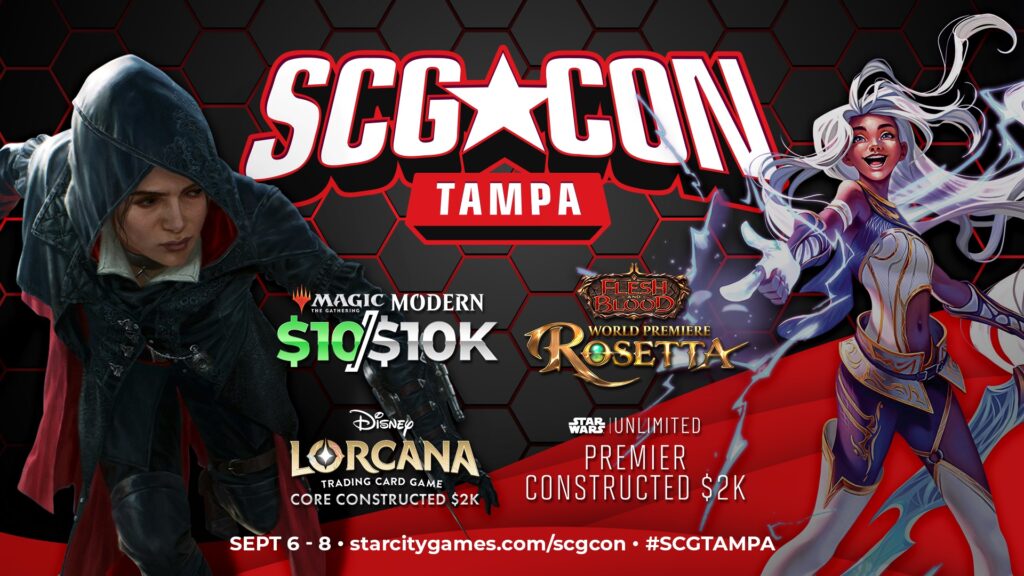
SCG CON is coming to Tampa, FL on September 6-8! The world’s premier trading card game convention features three full days of Magic: The Gathering, Flesh and Blood, Disney Lorcana, and Star Wars Unlimited action:
- Magic: The Gathering Modern $10Ks on Friday and Saturday; cEDH $5K; Super Sunday Regional Championship Qualifiers in Standard, Pioneer, and Modern; and Commander Celebration
- Flesh and Blood Rosetta World Premiere, Calling, and Battle Hardened events
- Disney Lorcana Core Constructed $2K and $1K events
- Star Wars Unlimited Premier Constructed $2K and $1K events
- Side events all weekend long
And so much more!
Plus, meet fan-favorite special guests and artists!
Best of all, SCG CON is free to attend!
Make your plans for SCG CON Tampa!

